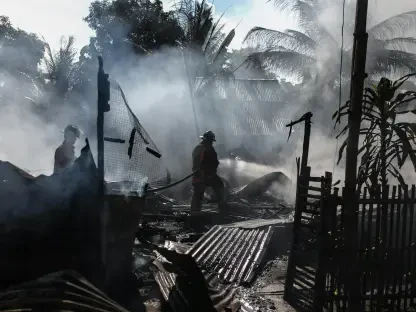In a remarkable stride towards revolutionizing digital content creation, Google’s introduction of the Veo 2 AI video creation model on YouTube Shorts has garnered significant attention. This integration goes beyond enhancing the platform’s existing Dream Screen AI tool, which had already been generating video backgrounds from text prompts. Veo 2 now incorporates the ability to create detailed characters and objects within these videos, adding layers of realism and quality that were previously unattainable. This technological marvel raises intriguing questions about the future of creativity, the potential for AI-generated content, and the overall impact on the YouTube Shorts community.
Advancements and Implications of Veo 2
Veo 2’s introduction marks a notable advancement in artificial intelligence’s capability to understand and generate content based on prompts, essentially redefining the speed and efficiency of video production. This tool allows creators to infuse their videos with unprecedented levels of detail and creativity, which could have taken hours or even days to achieve manually. As a result, content creators can now produce high-quality, engaging videos more rapidly, thereby increasing their output and maintaining a competitive edge on the platform. However, this surge in AI-generated content also presents the challenge of distinguishing between human and AI creations, potentially saturating YouTube Shorts with automated content.
One of the significant concerns with the proliferation of AI-generated content is the authenticity of what viewers consume. The increasing sophistication of tools like Veo 2 makes it difficult for audiences to discern whether a video was crafted by a human or an AI. This potential blurring of lines has sparked debates about the importance of maintaining transparency and integrity within digital landscapes. To address these concerns, Google has implemented SynthID watermarks and labels to clearly indicate the AI origins of videos produced using the Dream Screen tool. This measure is a step towards ensuring transparency, providing viewers with the necessary context, and preserving trust in the platform.
Regional Availability and Creator Benefits
As of now, Veo 2 and its enhanced features have been made available in the U.S., Canada, Australia, and New Zealand, with plans to expand into more regions in the near future. This phased rollout allows Google to carefully monitor the technology’s impact and make necessary adjustments before a global release. For content creators in these early-access regions, the introduction of Veo 2 could be a significant advantage. The tool not only enhances video quality but also offers an edge in producing unique, visually compelling content that stands out in the crowded digital space.
Additionally, content creators can benefit from another tool called Brainstorm with Gemini, designed to assist in generating fresh video ideas. This resource complements Veo 2 by fueling creativity at the conceptual stage, ensuring that creators have a steady pipeline of innovative content ideas. The synergy between these tools represents a powerful suite for any content creator aiming to leverage the full potential of AI in video production. However, as with any advanced technology, it’s crucial for creators to use these tools ethically and responsibly, considering the broader implications for the content ecosystem.
Future Considerations and Ethical Implications
In a significant leap forward in the realm of digital content creation, Google’s launch of the Veo 2 AI video creation model on YouTube Shorts has captured a lot of attention. This innovation goes beyond simply enhancing the existing Dream Screen AI tool on the platform, which had already been generating video backgrounds from text prompts. With Veo 2, users can now create intricate characters and objects within these videos, adding layers of realism and quality that were previously unimaginable. This technological advancement prompts interesting discussions about the future of creativity, the possibilities of AI-generated content, and its broader impact on the YouTube Shorts community. As content creators experiment with these advanced tools, it’s likely we’ll see a shift in how videos are produced and consumed, pushing the boundaries of what’s creatively possible. This development not only supports artistic expression but also sets a new benchmark for digital content quality.









